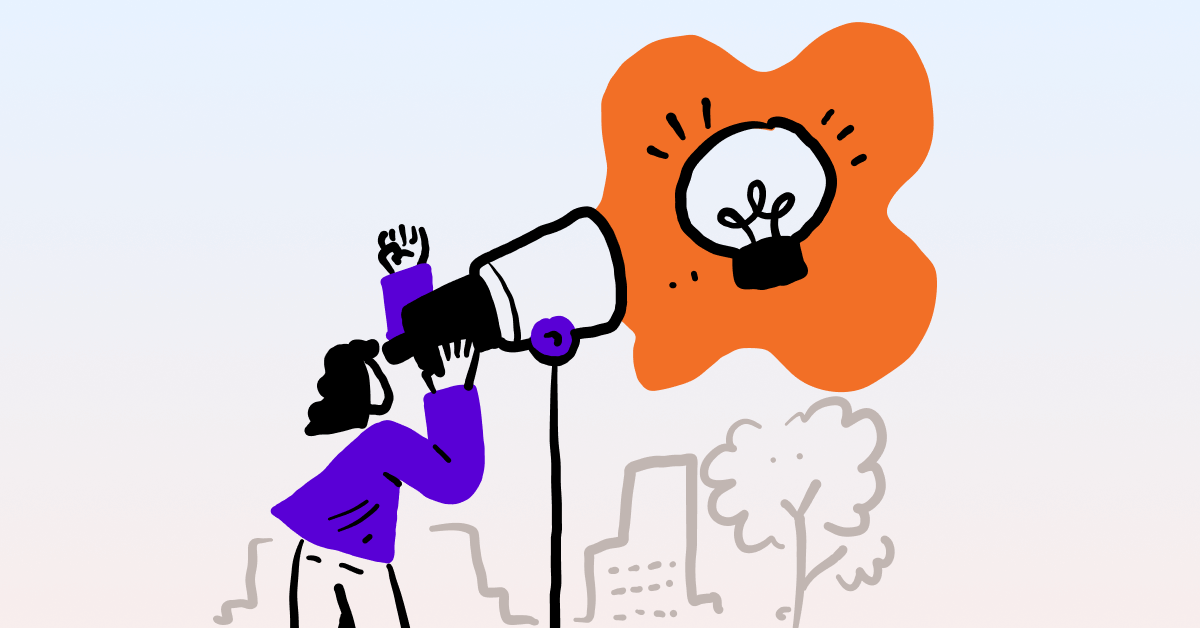Our team keeps a close eye on the future of all-things tech. Whether we’re updating our ambitious roadmap or integrating new technologies into our own work, we’re constantly striving to create and support innovation for our customers, and our industry. Powered by advancements in Artificial Intelligence and the continued popularity of remote and hybrid working, this year is poised to bring incredible change to almost every sector and markets. Below, we’ve rounded up the top five digital transformation trends that we think will have a major impact in 2025 (and beyond).
The dominance of AI
The rise and popularity of mainstream AI tools has already had a profound impact on the way that people around the world access information. ChatGPT, for example, reports that nearly 100 million users access the tool every single week. And when it comes to the application of AI tools in professional life, it’s hard to find a role or field where AI isn’t having an impact on day-to-day tasks.
Grammarly and copy.ai are extremely popular in the realm of content creation and editing. Video creation and editing platform, Synthesia, boasts 1 million users across 60,000 businesses. aiXcoder is purpose-built to “tackle any coding task,” and EliseAI is a tool built to offer legal support to property managers. The list goes on (and on), and where there isn’t a dedicated AI tool for a specific job or business function, it’s likely that one of several conversational AI chatbots can provide enough information to get you on the right track.
While there are still plenty of people who are skeptical of AI, or unsure about whether and to what extent they want to adopt it in their organization or work, it’s clear that business leaders around the world see it as a huge opportunity for increasing efficiency, boosting productivity, and improving the speed and accuracy of decision-making. In fact, Forbes recently reported that over 82% of CEOs and senior leaders who took part in a global survey of over 7,000 business leaders believe that AI will have an “extreme to significant impact on their business.”
It’s clear that the direction of travel for AI tools and platforms is clearly toward further, deeper integration into all aspects of professional life. In 2025 and beyond, we expect to see powerful waves of AI-powered technology take hold across all markets and regions, meaningfully changing the ways in which we work, self-educate, and consume and share information.
Better tools to support collaboration

The rise of remote and hybrid work, and the continued globalization of many workforces, means that the need for tools which support connectedness and collaboration between colleagues and businesses is higher now than it’s ever been before.
In 2025 and beyond, the businesses which leverage these changing landscapes to level-up their communications strategies will be those best-positioned to attract top talent and drive better business outcomes. From workplace chat software (like Slack or Teams) to cloud-powered platforms for document sharing and editing, collaboration tools make it possible for global and virtual workforces to communicate easily and stay engaged from just about anywhere.
Today, hybrid working models are only gaining in popularity, and the need for comprehensive digital transformation to support better communication within such modern workplaces is clear.
Increased dependency on cloud-based solutions
Just as changing ways of working will require organizations to invest in better collaboration and communication tools, this shift will prompt greater dependency upon cloud-powered platforms. But the continued growth and popularity of cloud commuting isn’t just driven by a more dispersed and virtual workforce, it’s also driven by an unprecedented desire for greater scalability and increased flexibility that only cloud computing platforms can offer.
With a model purpose-built to be flexible and cost-effective when compared to traditional on-premises systems, cloud computing platforms are attractive – in part – because they enable businesses to quickly (if not instantly) adjust the amount of computing resources that they use. In addition, functionality such as load balancing and auto scaling means that performance and availability of resources is handled behind-the-scenes and adjusted based on demand, ensuring a frictionless computing experience for users.
In 2025 and beyond, the ease and convenience of cloud computing platforms will continue to make them an incredibly attractive option for businesses across nearly every industry and region.
The drive toward personalization

Moving forward, well-executed digital transformations will enable more customization and personalization for businesses and end users.
This shift will align with evolving expectations as to what constitutes a good and enjoyable user experience. By using data and analytics, content and strategies will be adapted to meet the needs of specific users. The channels for these experiences will include chatbots, recommendation engines, personalized ads, and more. By creating more tailored experiences across digital channels and platforms, businesses will be able to increase messaging resonance and customer engagement, improve customer or user understanding, and – ultimately – drive better business outcomes.
With an increased understanding of their most important audiences, businesses can deploy more targeted, more relevant messaging, and ensure that the user experience they’re delivering stands the best chance of making an impact, and driving engagement.
Digital transformation as a pillar of sustainability

Sustainability in digital transformation is a complex topic. On one hand, digital transformation can support and even accelerate sustainability initiatives: by replacing traditional paper-based communications with digital screens, for example, businesses can make an identifiably positive impact on the environment. On the other hand, using AI-powered tools requires an incredible amount of energy, and water. In fact, it’s estimated that ChatGPT’s energy use over the course of a year is equivalent to the power consumption of a small country.
So how can businesses approach digital transformation in ways that are both innovative and sustainable?
Striking this balance requires a strategy that identifies where digital processes and technologies should be implemented to achieve sustainability-related goals, while acknowledging the areas where digital transformation might have a negative, or unintended impact. By flagging these potential areas, businesses can take an approach to digital transformation that bears these concerns in mind, and includes steps to mitigate, eliminate, or offset them. For example: organizations who increase their use of AI, which is decidedly energy inefficient, can also increase their reliance on cloud computing solutions, which are reported to be 93% more energy efficient than traditional data centres.
Ultimately, organizations must own their digital transformation strategies and take responsibility for the impact that any digital processes, tools, or platforms might have on the environment, society, or the economy.
– – –
Our team is committed to making sure that organizations have the information that they need to engage in a smart, impactful digital transformation.
To learn more about how digital screens can support a sustainable approach to communications, just read this article.
And if you’re ready to get started with Yodeck, just visit this page to set up your free account.
*Katie Rose Hester is a senior content strategist and writer working with product-led businesses bringing interesting, helpful innovations to market.
